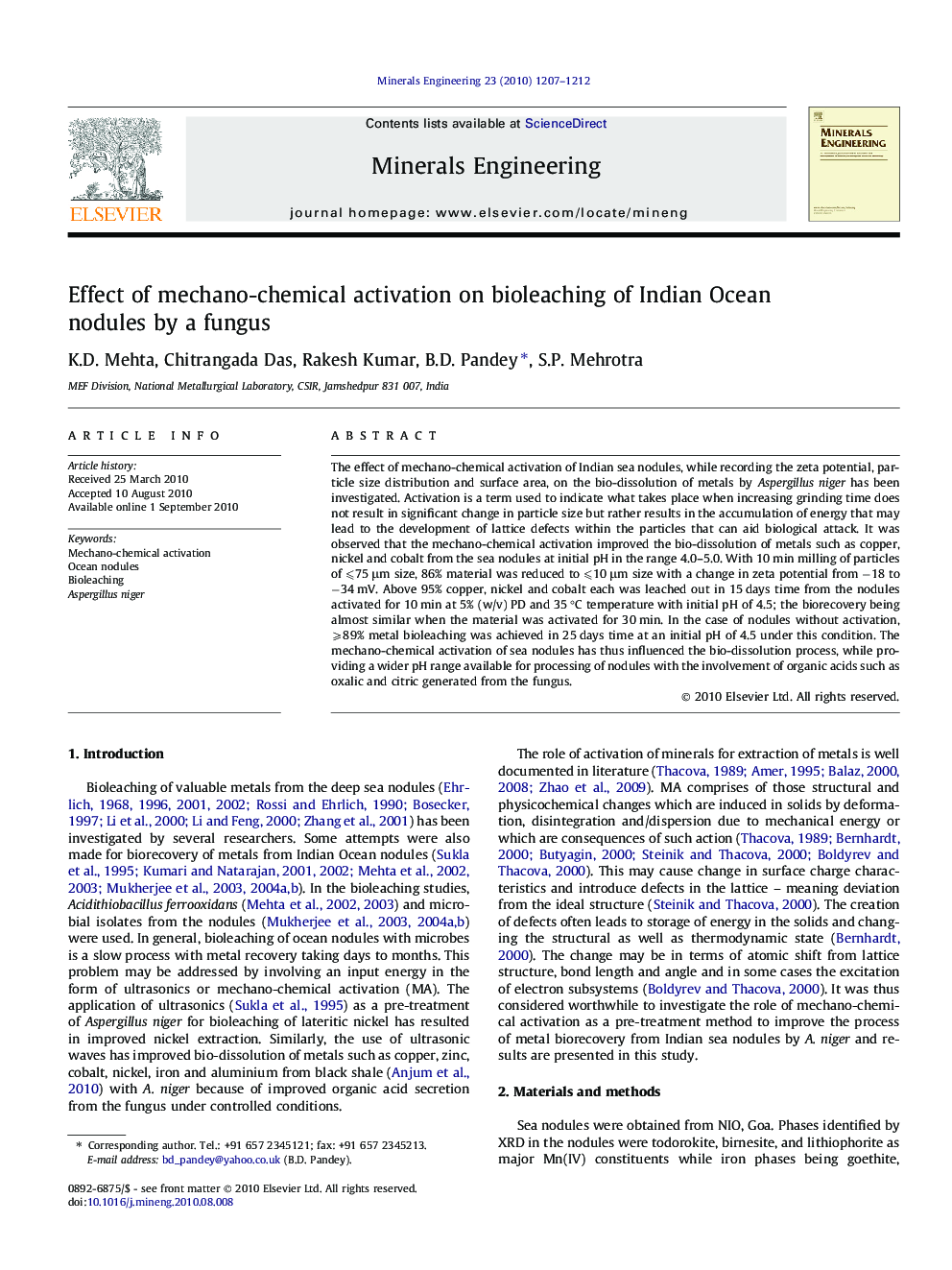| کد مقاله | کد نشریه | سال انتشار | مقاله انگلیسی | نسخه تمام متن |
|---|---|---|---|---|
| 233855 | 465369 | 2010 | 6 صفحه PDF | دانلود رایگان |

The effect of mechano-chemical activation of Indian sea nodules, while recording the zeta potential, particle size distribution and surface area, on the bio-dissolution of metals by Aspergillus niger has been investigated. Activation is a term used to indicate what takes place when increasing grinding time does not result in significant change in particle size but rather results in the accumulation of energy that may lead to the development of lattice defects within the particles that can aid biological attack. It was observed that the mechano-chemical activation improved the bio-dissolution of metals such as copper, nickel and cobalt from the sea nodules at initial pH in the range 4.0–5.0. With 10 min milling of particles of ⩽75 μm size, 86% material was reduced to ⩽10 μm size with a change in zeta potential from −18 to −34 mV. Above 95% copper, nickel and cobalt each was leached out in 15 days time from the nodules activated for 10 min at 5% (w/v) PD and 35 °C temperature with initial pH of 4.5; the biorecovery being almost similar when the material was activated for 30 min. In the case of nodules without activation, ⩾89% metal bioleaching was achieved in 25 days time at an initial pH of 4.5 under this condition. The mechano-chemical activation of sea nodules has thus influenced the bio-dissolution process, while providing a wider pH range available for processing of nodules with the involvement of organic acids such as oxalic and citric generated from the fungus.
Research highlights
► Mechano-chemical activation of Indian Ocean nodules is accompanied by reduction in particle size and accumulation of surface charge. In 5 min of milling excessive breakage of particles takes place and increasing grinding time beyond this point does not result in further significant size reduction but increases activation impacts. In 10 min of milling, 86% particles are of ⩽10 μm size whereas the same size is obtained almost quantitatively (99%) in 30 min of milling. The zeta potential varies from −18 mV to −21 mV in 5 min of milling of the material which is −34 mV in 10 min of activation and becomes constant (−48 mV) beyond 15 min of activation. Beyond 5 min of milling, the shear stress and structural disintegrations/defects might be developed in the particles with accumulation of charge.
► Activation of nodules improves the bioleaching kinetics with Aspergillus niger and provides larger pH range (4–5 pH) for metal recovery. Above 95% Cu, Ni and Co are recovered within 15 days of bioleaching at 35 °C and 5% PD with 10 min activated particles as compared to 25 days time required for the material without activation.
► Improved metal recovery in activated material of similar size range (⩽38.5 μm) is obtained than those from the non-activated nodules. XRD phase identification and SEM of the leach samples show the formation of iron hydroxide covering the surface of the particles. The bioleaching with A. niger involves indirect leaching mechanism by the participation of secreted organic acids such as citric and oxalic acids, with maximum E being 380 mV in 15 days.
Journal: Minerals Engineering - Volume 23, Issue 15, December 2010, Pages 1207–1212